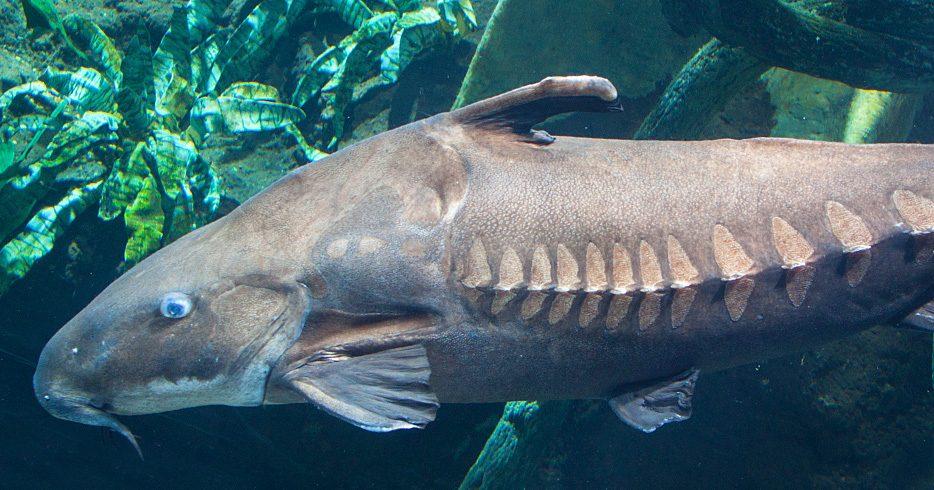Often fishermen wonder if catfish have scales. The answer is no. Catfish do not have scales but have different protective layers atop their skin.
Catfish do not have scales. Instead, they have a protective layer of slime. Some species of catfish have even developed protective plates called scutes. Slime and scutes are the primary defensive mechanisms of catfish.
There are many theories on why catfish do not have scales. Most believe it is an evolutionary adaptation, providing catfish with some unique abilities we will discuss later in this article. Who knew not having scales could be an advantage?
Why Do Catfish Not Have Scales?
One theory is that catfish are scaleless because it allows them to breathe through their skin. This is a useful evolutionary adaptation that allows catfish to live out of water for longer periods than other fish are capable of. Because of this, catfish can populate and spread easier, often taking advantage of flooding seasons where they have washed ashore and wiggle their way to new waters.
Another advantage of not having scales is that catfish can blend into their environment easier. Other fish have shiny scales, while catfish have leathery skin. The skin of the catfish looks dull and doesn’t shimmer like most fish. This is an advantage for predator catfish waiting for prey to pass by.
Scales help fish with their ability to cut through the water as they swim. Although catfish do not have scales, they have slime, which serves the purpose of scales and more. Keep reading to find out more about catfish and why they are slimy instead of having scales.

Why are Catfish Slimy?
Catfish aren’t the only fish that has slime. In fact, every species of fish has some amount of slime. The difference is that most fish have a protective layer of scales. The problem for catfish is that they do not have scales; to make up for this defensive deficit, they produce a lot of slimy mucus.
Benefits of Catfish Slime
There are many reasons why catfish have slime. In this portion let’s review the benefits of catfish slime.
If you are interested in learning more about catching catfish, check out our article on The Ultimate Guide to the Best Catfish Bait.
Regulation & Protection
Catfish secrete a slime to help regulate their bodies, protect their bodies, and recover from wounds such as abrasions that would usually be guarded against by scales. This glycol-protein slime also makes it hard for catfish to get infected by parasites because the membrane is hard to penetrate.
The slime also contains a high concentration of the molecules that coagulate blood, forming clots that stop bleeding, and enzymes that accelerate cell division and the formation of new tissue.
New York Times (original context from January 26, 1988, Section C, Page 3)
Scientists in the past have studied the healing properties of catfish slime. Although the evidence is inconclusive, some proposed that catfish slime helped their wounds heal up to three times faster than usual. They stated that the catfish slime has up to 60 different proteins that are responsible for healing and coagulating blood, as well as anti-bacterial properties.
Reduces Drag
Catfish slim helps the fish swim. It reduces the water resistance of their skin which allows their skin to be hydrophobic to a degree. Furthermore, the slim allows them to easily move in and out of their regular environment, such as holes in undercuts, underwater structures, and whatever space they can lodge themselves into to feel safe and comfortable. Our article on Where Do Catfish Live? goes into detail on where catfish can be found in rivers, lakes, and ponds.
Respiratory Benefits
Some catfish are able to breathe through their skin as well as their gills. The slime on these catfish help with this process. The slime helps with the oxygen exchange for catfish that can breathe partially through their skin.
What Catfish Slime Made Of?
Catfish slime is a combination of different glycol proteins. When combined with water, these glycol-proteins create a very slimy substance are have healing and protective properties.

How to Get Rid of Catfish Slime
When cooking catfish is it imperative you get rid of the catfish slime. If left on, the slime can alter the taste of the meat and create a texture within the food that isn’t appetizing.
Here’s an easy way to remove catfish slime:
- Fill a large bowl with warm water and one cup of table salt
- Cut a lemon and squeeze 1/2 into the bowl
- Dip the gutted catfish into the bowl, then rub the other 1/2 of lemon over the surface of the fish until the slime is gone
The acidity in the lemon and the abrasiveness of the salt will take off the catfish slime before long.
Is Catfish Slime Poisonous?
Catfish slime is not poisonous although any fish you are considering eating should be inspected for healthiness.
You should not be worried about catfish slime. The gel-like substance that catfish slime secretes is remarkable in its ability to heal wounds.
The slime is found in American catfish such as blue cats, channel, and flatheads.
Why Do Catfish Have Spines?
The spines of catfish are another defensive mechanism. Spines are often called “barbs.” They are located on their dorsal fin’s edge and along the pectoral fins.
Why Do Catfish Barbs Hurt?
The barbs hurt because they are needle-sharp. If they puncture skin, the barbs can leave behind bacteria that risk infecting the wound. Oftentimes, smaller catfish have the worst barb stings because their barbs are smaller and able to puncture skin easier.
